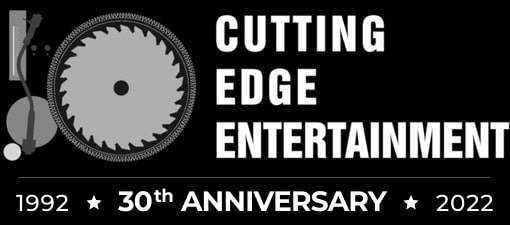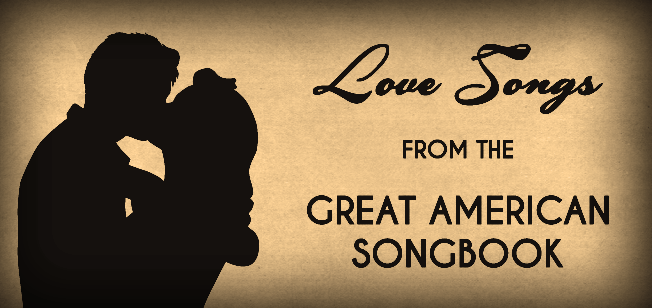Love Songs from the Great American Songbook
The Great American Songbook is a collection of hundreds of songs written primarily toward the beginning of the 20th century, and many believe they exemplify popular songwriting at its very best, and as such they are often referred to as Popular Standards.
Most Popular Standards are love songs – love sought, gone wrong, unrequited, found and lost again. The list below has been stripped of all but the found or reciprocal variety of love.
These songs have continued to be played, sang and listened to since the dawn of the recording era. Contemporary artists have continue to record them decade after decade, subsequently introducing them to generation after generation.
I read somewhere that Cole Porter was once asked “What is your secret to writing hit song after hit song?” to which he humbly answered “I merely think of new and different ways to say I love you”. I think that pretty much sums up this list.
…..
“All the Things You Are” (Oscar Hammerstein II/Jerome Kern, 1939)
Artist: Ella Fitzgerald (1961)
This 1939 Hammerstein/Kern number charted three times by three different big bands in 1940, and then just about everyone else (Streisand, Brubeck, Sinatra, Monk, Parker, et cetera). I chose Lady Ella because I liked the arrangement and I felt her flawless diction always does a song good.
“Cheek to Cheek” (Irving Berlin, 1935)
Artist: Ella Fitzgerald and Louis Armstrong (1956)
Perhaps best remembered by Fred Astaire and Ginger Rogers from the film Top Hat, as charming as that recording may be it sounds somewhat tinny and dated. It’s been recorded by close to a hundred different artists since, but – for me – Ella and Louis deliver the best with their intimate, yet jazzy rendition.
“Exactly Like You” (Dorothy Fields/Jimmy McHugh, 1930)
Artist: Diana Krall (2006)
Over seventy-five years after this romantic tune was first put to paper, Diana Krall delivers a brilliant, contemporary and even sexy interpretation. Even though this classic has had quite a few contemporary sounding recordings made (Sinatra, Cole, Armstrong, Coltrane, et cetera), Ms. Krall nails this hip rendition.
“Fly Me to the Moon [In Other Words]” (Bart Howard, 1954)
Artist: Frank Sinatra (1964)
Although recorded by countless artists, figuratively, this tune belongs to Frank Sinatra. The popular 1964 recording was a triple power house with Sinatra accompanied by the great Count Basie and arranged by Quincy Jones, this is the number to play.
“I Get a Kick Out Of You” (Cole Porter, 1934)
Artist: Frank Sinatra (1964)
Frank recorded this tune a few times, but I prefer this 1964 Capitol recording for it’s inclusion of the original Cole Porter lyrics. Yet another Popular Standard recorded by so many, Sinatra’s version is as hip and contemporary as the day it was recorded.
“Love Is Here to Stay” (Ira Gershwin/George Gershwin, 1938)
Harry Connick Jr. (1989)
So many great recordings of this tune (Sinatra, Fitzgerald, Charles, Holiday, Clapton, et cetera) it was hard to choose just one. Perhaps the most covered of all of the Gershwin tunes. This version, by Harry Connick Jr. and featured in the motion picture When Harry Met Sally is cool as they come.
“The Very Thought of You” (Ray Noble, 1934)
Ella Fitzgerald (1962)
Truth be told, Ray Noble didn’t write this tune at all, but bought it for $100.00 from Sid Ascher, and the rest is history. Covered by Jazz, Blues and Pop artists alike, this romantic love song remains a part of the musical fiber, and Ella’s recording does this Popular Standard great justice.
“The Way You Look Tonight” (Dorothy Fields/Jerome Kern, 1936)
Maroon 5 (2009)
Used in several movie soundtracks (Valentines Day in 2010 and My Best Friends Wedding in 1997), this was originally featured in the motion picture Swing Time in 1936, for which it won the Academy Award for Best Song. Although countless artists have recorded this, Maroon 5 does a great job with this immortal classic with this recording from 2009.
For me, the thing that makes the Great American Songbook truly great is that it is truly American. The United States (and Canada) would set the new standard. Instead of following the Old World, America created music and songwriting styles uniquely its own. The Great American Songbook re-defined, and perhaps re-invented popular music… and the Old World now hummed to American songs, most of which were love songs.
Love the love…
-Craig
Sources: The Encyclopedia of Popular Music by Robert Lissauer, The NPR Curious Listeners Guide to Popular Standards by Max Morath, Pop Memories 1890-1954 by Joel Whitburn and the invaluable help of Eddie Bruce whose knowledge of The Great American Songbook is astounding and to whom I am forever grateful.

